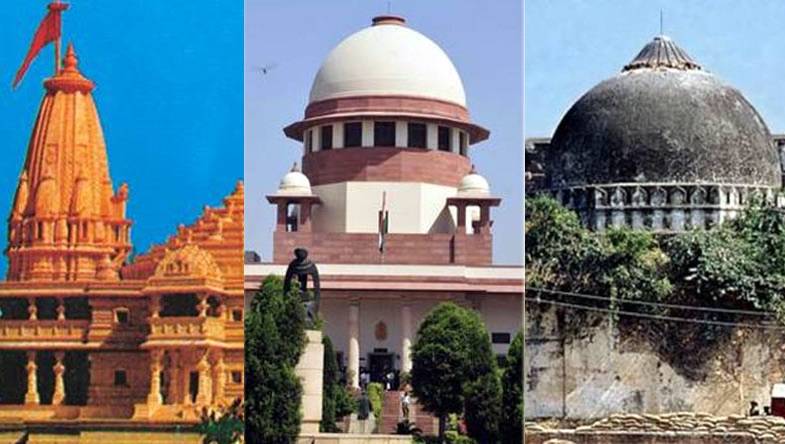The petition claims that before the construction of the Babri mosque, there were structures and artefacts relating to the Buddhist religion at the site, which were demolished to build the mosque.
– –
BARELY three years after its Ayodhya verdict, the Supreme Court on Friday is likely to hear a writ petition filed prior to it in 2018, seeking to declare the disputed land as Ayodhya Buddha Vihar, and as an archaeological site of national importance under Sections 3 and 4 of the Ancient Monuments and Archaeological Sites and Remains Act, 1958, and the Ancient Monuments And Archaeological Sites and Remains (Amendment and Validation) Act, 2010.
A bench comprising Chief Justice of India Dr. D.Y. Chandrachud and Justices P.S. Narishma and J.B. Pardiwala will hear the matter. Justice Dr. Chandrachud was part of a five-judge Constitution bench which, in November 2019, in a unanimous verdict, handed over the disputed site in Ayodhya, where the Babri mosque once stood, for the construction of a Ram temple and directed the Union Government to allot a five-acre plot to the Sunni Waqf Board for building a mosque.
Vineet Kumar Maurya, the petitioner, claims himself to be a public-spirited citizen, and is a postgraduate in the subject of Ancient Indian History from Faizabad University in Uttar Pradesh. He claims to organise Buddhist functions nationally and internationally to spread the preachings of Lord Buddha.
In his petition, Maurya claims that before the construction of the Babri mosque, there were structures and artefacts relating to Buddhism at the site, which were demolished to build the said mosque. Questioning the Allahabad High Court’s 2010 ruling on the Ayodhya land dispute, Maurya argues that even though the high court noticed that as per historians, reports of the Archaeological Survey of India and witnesses in the case, there were remains of stupas and pillars resembling Buddhist architecture at the site, no further finding was recorded as to the claim of the Buddhist community. This was because impleadment applications filed on behalf of members of the Buddhist community were rejected, thus denying followers of Buddhism the opportunity to place their case before the high court.
“That in terms of chapter ‘Ayodhya’ in ‘An Encyclopedia of Indian Archaeology’ edited by A. Ghosh Vol. 11 Ayodhya also finds reference in Buddhist and Jain texts. It further refers that Buddha is also stated to have stayed here for some time,” the petition reads.
In his petition, Maurya claims that the high court deliberately ignored the archaeological evidence in favour of Buddha Vihar that came during the hearing of the Babri Masjid—Ram Janmabhoomi case.
Maurya’s petition first came up for hearing on July 3, 2018, before a division bench comprising Justices Rohinton Fali Nariman and Indu Malhotra. Justice Nariman chose to recuse himself from the matter. On July 23, 2018, a bench comprising Justices Ranjan Gogoi and R. Banumathi tagged the matter with a batch of civil appeals which arose from the Allahabad High Court’s ruling in the Ayodhya case. However, as per the case status, Maurya’s petition got de-tagged on a day when the five-judge Constitution bench reserved its judgment on the civil appeals against the high court’s judgment.


